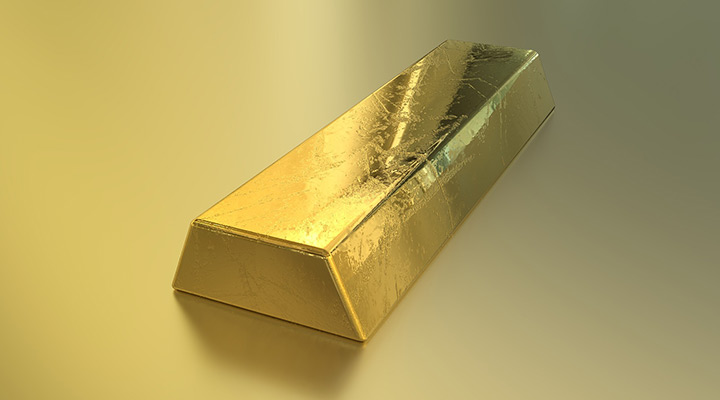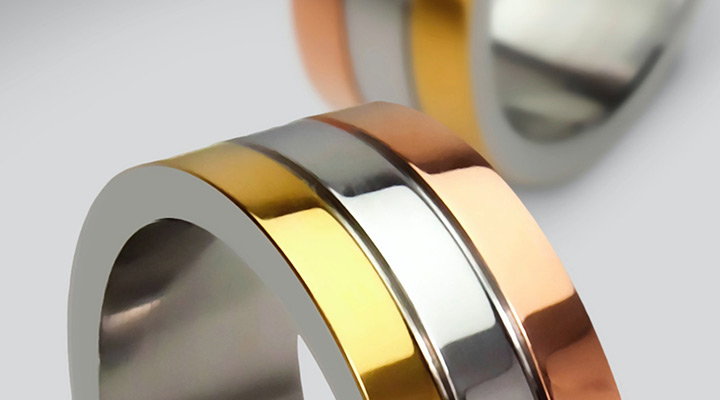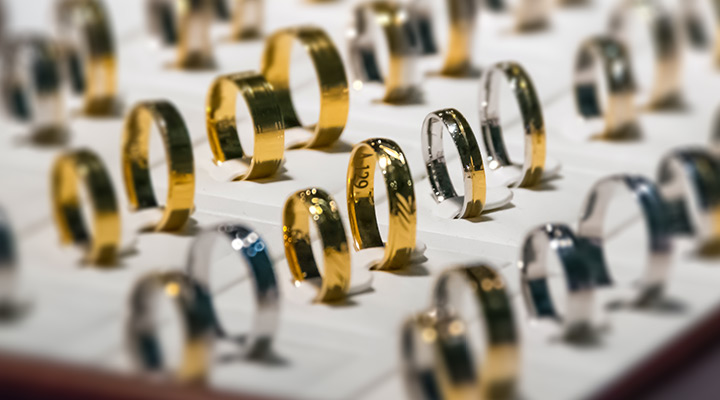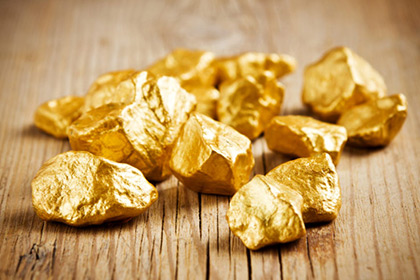When you go shopping for any kind of gold jewelry, you will come across the term ‘karat’ in reference to gold, for example 9 Karat, 14 Karat, 18 Karat gold. In this article, we will explain what this means, and what the difference is between the various types of Karat gold jewelry.
What are Karats?

The term Karat Gold refers to the percentage of pure gold in a piece of jewelry. Karats are used to measure the ratio of pure gold to other metals or alloys within a piece of gold jewelry.
Karats are measured on a scale from 0 to 24. The higher the karat number, the more pure gold there is, and the more expensive it will be. 24 Karat gold is the purest form of gold, and is 100% gold unmixed with other metals.
Depending on the ratio of pure gold to other metals, the gold used in jewelry is usually categorized as 9 Karat (9K), 10K, 12K, 14K, 18K, 22K and 24K.
18 karat gold consists of 18 parts gold (75%) and 6 parts ‘other metals’, which are used to add strength and color.
In comparison, 10 karat gold is made up of 10 parts gold (41.7%) and 14 parts ‘other metals’.
Why are Other Metals Added to Pure Gold?

Gold in its pure state is highly valuable but also relatively soft. Pure gold is combined with other metals and alloys, such as copper, silver and palladium, to strengthen the jewelry and make it more durable. Metals are also added to gold to enhance color, e.g. copper is added to gold to form ‘rose gold’, and white metals are added to create white gold.
Lower karat gold is not tarnish-resistant. Higher karat gold is much more resistant to tarnishing.
What is the difference between Karat and Carat?

The two words Karat and Carat are used to describe jewelry, and can often be confused with one another. Although both sound the same, they have very different meanings.
Karat is the unit used to measure the purity of the gold in the piece of jewelry.
Carat is the unit used to measure the weight of the gemstones used (e.g. diamonds) in the piece of jewelry.
What is the difference between Higher Karat Gold and Lower Karat Gold?
Listed below are a few comparisons between higher and lower karat gold:
- Lower karat gold is less valuable than higher karat gold.
- High karat gold is softer, and low karat gold is more durable.
- Lower karat gold is more likely to tarnish over time. Higher karat gold is much more tarnish-resistant.
- There is a higher risk of skin irritation with lower karat gold, if you have an allergy to a metal that has been added to the gold (e.g. copper, silver, nickel, zinc).
- Higher karat gold has a brighter, richer yellow hue than lower karat gold.
So What Karat Should I Buy?
The answer to this question depends on a few factors, such as your budget, what type of jewelry you are purchasing, your aesthetic taste, and how durable you want the piece of jewelry to be.
In general, we would advise you to purchase the most expensive karat that your budget allows. The chart below outlines a few characteristics, advantages and disadvantages of the different types of Karat gold jewelry.
| Karats | Parts of Gold | % Purity | Advantages | Disadvantages |
|---|---|---|---|---|
| 9K | 9/24 | 37.5 | Durable and strong Lowest price so very affordable | Lower quality jewelry Pale yellow color Higher risk of skin irritation from added metals Higher risk of tarnishing over time |
| 10k | 10/24 | 41.7 | Durable and strong Very affordable | Light yellow color Lower quality than higher quality karat gold |
| 12k | 12/24 | 50 | Durable Excellent choice for a moderate budget | Color not as warm and bright as higher karat gold Lower quality than higher karat gold |
| 14K | 14/24 | 58.3 | Excellent balance of purity, price and quality Most popular choice for gold rings Warm yellow color More affordable than higher karat gold | Lower quality than higher karat gold More expensive than lower karat gold |
| 18K | 18/24 | 75 | Rich yellow color - warmer and brighter tone than lower karat gold High quality Very low risk of tarnishing | Less durable and more costly than 14k gold |
| 22K | 22/24 | 91.7 | Excellent Color and quality | Expensive Soft, so scratches easily |
| 24K | 24/24 | 99.9 | Extremely valuable, the purest form of gold | Very soft so scratches easily Very bright yellow color Extremely expensive |
Choose the purity level that makes the most sense to you and that appeals to you.


